Star Trek has always been a staple of science fiction, it’s been around for nearly 60 years and has absolutely left its mark on both pop culture and real-world scientific and technological innovations. While there have been 12 shows and 13 movies (with even more on the way!), the core concept of this galaxy-spanning franchise has always been about ‘Infinite Diversity in Infinite Combinations’. Unlike so many dark and gritty post-apocalyptic sci-fi properties, Trek really stands alone in giving us an optimistic look at our future. It’s a story of hope, but that doesn’t mean that there aren’t plenty of phasers and explosions along the way.
After fading into oblivion in the late 90s and early 2000s (thanks in part to a few lackluster offerings), Star Trek is officially back and bolder than ever before with brand new series like Strange New Worlds, Picard, Lower Decks, and Discovery – now streaming only on Paramount Plus! Still, with so much content to binge, it can be a little overwhelming for new fans that want to get into the newer shows, so here’s a rundown of all the classic Trek shows that the modern era builds on!
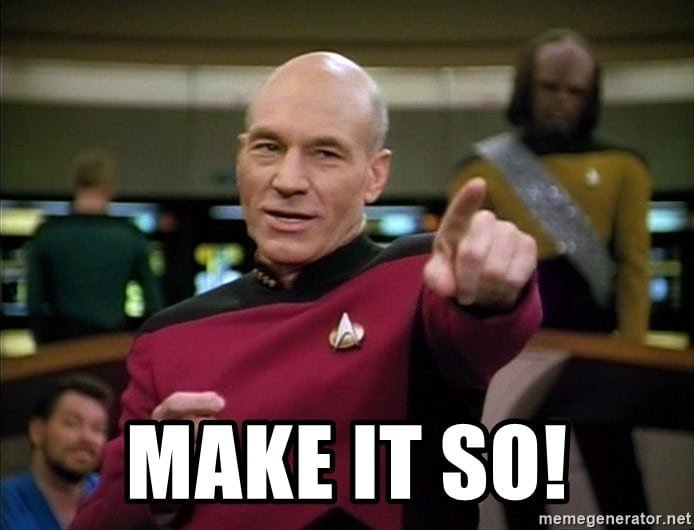
Star Trek: The Original Series (1966-1969)
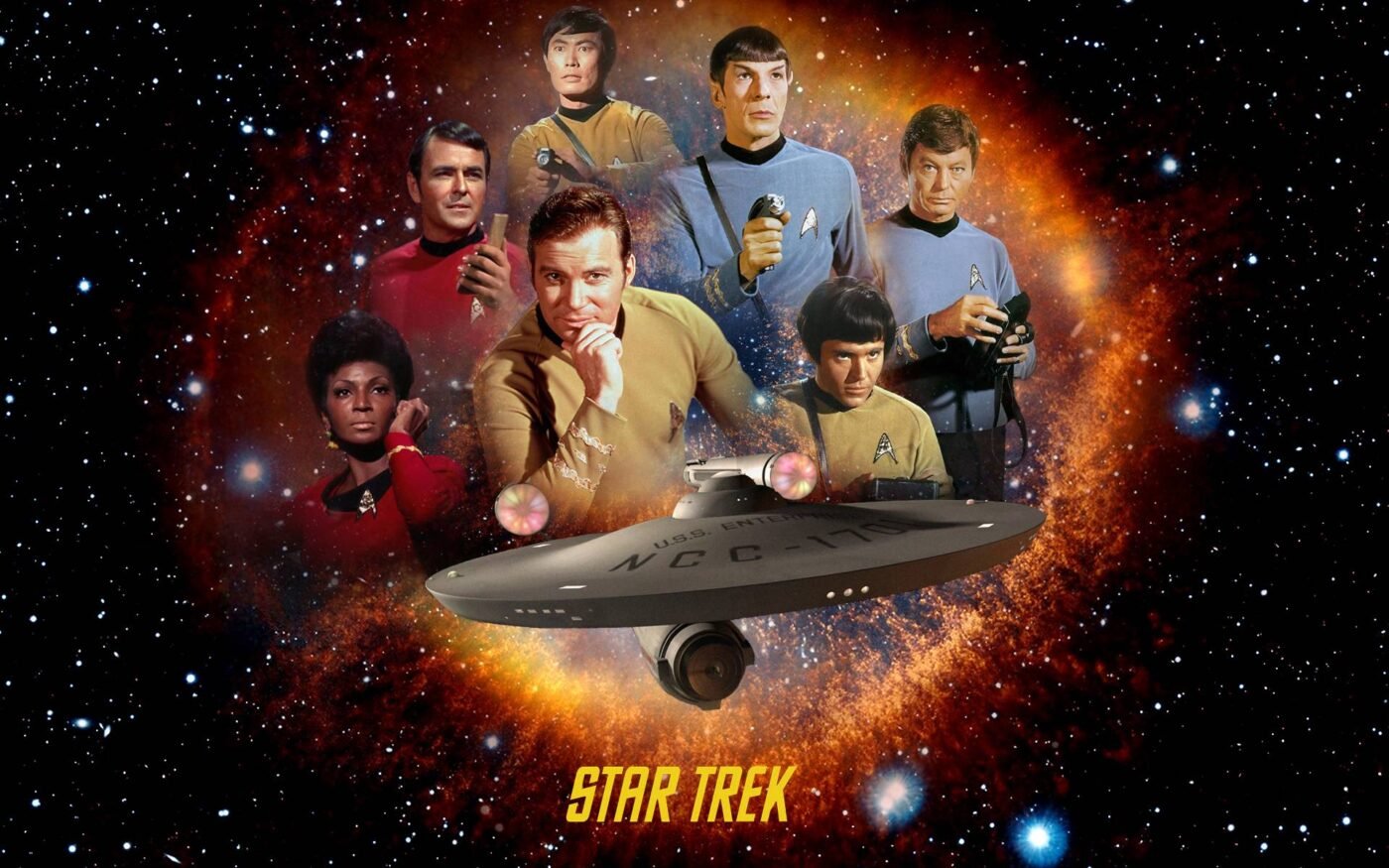
Star Trek: The Original Series was very progressive for its time, but it was also very much a product of its time. The sci-fi series was groundbreaking in showcasing a diverse crew from various backgrounds working together with the goal of exploring the cosmos in search of new cultures, on a mission of peace, in a dangerous galaxy. It was part western, part naval drama – in space. It also inspired many real-world scientists and astronauts and even predicted a number of technologies that we use today, including (but not limited to) cell phones and modern computers.
Created by Gene Roddenberry, Star Trek was originally intended to be a much more cerebral show about the crew of the USS Enterprise and its 5-year mission, in a hopeful future where humanity has solved all its terrestrial problems and joined together with other alien civilizations as part of a United Federation. What some may not realize is that the original pilot, “The Cage” (featuring Christopher Pike as the original Captain of the Enterprise) was actually scrapped (and was later reincorporated as flashbacks in the two-part episode, “The Menagerie”), but the concept was given a second chance by producer, Lucille Ball (from I Love Lucy). Oddly enough, the show’s second pilot – “Where No Man Has Gone Before” wasn’t actually the first episode aired, instead, the first episode aired on TV was actually “The Man Trap”!
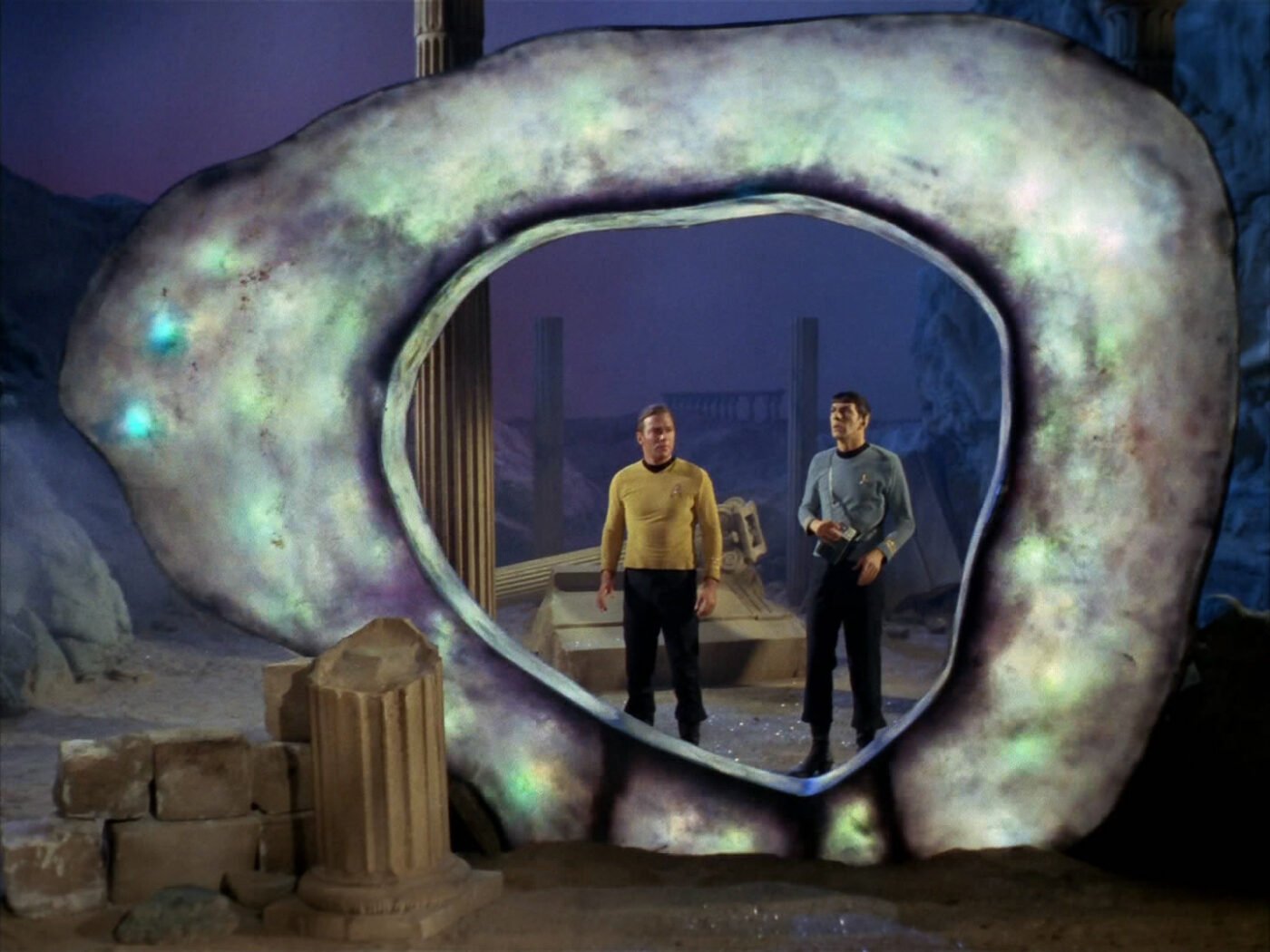
TOS featured William Shatner as Captain James T. Kirk, Leonard Nimoy as Spock (a Vulcan science officer), DeForest Kelley as Dr. McCoy aka “Bones”, Nichelle Nichols as Lt. Uhura, James Doohan as Scotty (the ship’s Scottish engineer), George Takei as Hikaru Sulu, and Walter Koenig as Ensign Pavel Chekov! The show made some bold choices by putting a Russian crewmember (Chekov) on an American TV show, at the height of the Cold War, and a black woman (Nichelle Nichols) in a position of power, during the height of the Civil Rights movement, in the 60’s. Nichols actually thought about quitting the series early on, but Martin Luther King, Jr. himself actually convinced her to stick with it, because of what it meant in terms of representation.
There’s no denying that the show is absolutely iconic, many fans also admit that it’s rather dated by today’s standards, and while there are some truly great episodes (“Balance of Terror”, “The Menagerie”, “City on the Edge of Forever”, “The Trouble with Tribbles”, etc) – about 2/3rds of the episodes don’t necessarily hold up all that well, whether for budgetary reasons, some occasional unfortunate racial stereotypes, slow pacing, cheesy writing, or bad special effects. But hey, even some of those episodes can sometimes be a lot of fun in their own special way.
Star Trek: The Animated Series (1973-1974)
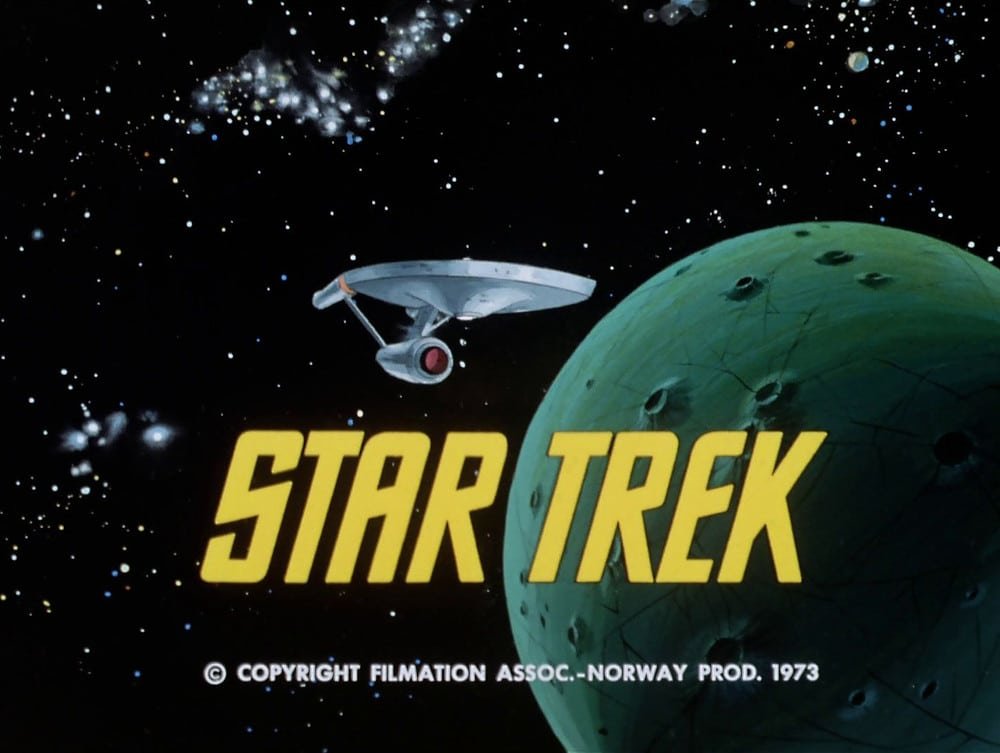
The Original Series was canceled after a lackluster third season, but the show continued to gain a cult following among geeks. The fandom of the 60’s show was kept alive, which eventually lead to Star Trek: The Animated Series. While it’s not “great” by today’s standards, the endurance of the Star Trek franchise owes a lot to this trippy 70’s cartoon. It really does feel like a continuation of the original series but with a far broader scope in terms of “special effects”.
This one gives us some of the most bonkers episodes in the franchise, like “The Magicks of Megas-tu” (the one with the devil), or “The Infinite Vulcan” (the one with a giant Spock), but it also has what might be one of the best early episodes of the franchise, with the emotional time-travel story, “Yesteryear” – which gave us more character development for Spock than anything before, and possibly since. Admittedly, this one is really only for the hardcore fans, or those who just love cheesy B-movie era sci-fi and Hana Barbara cartoons, and (like TOS) is often considered “loose cannon” at best.
(Fun fact: there was also a concept for a live-action sequel series in the ’70s called “Star Trek: Phase II” that later ended up evolving into both the first Star Trek movie *and* the basis for Star Trek: The Next Generation!)
Star Trek: The Next Generation (1987-1994)
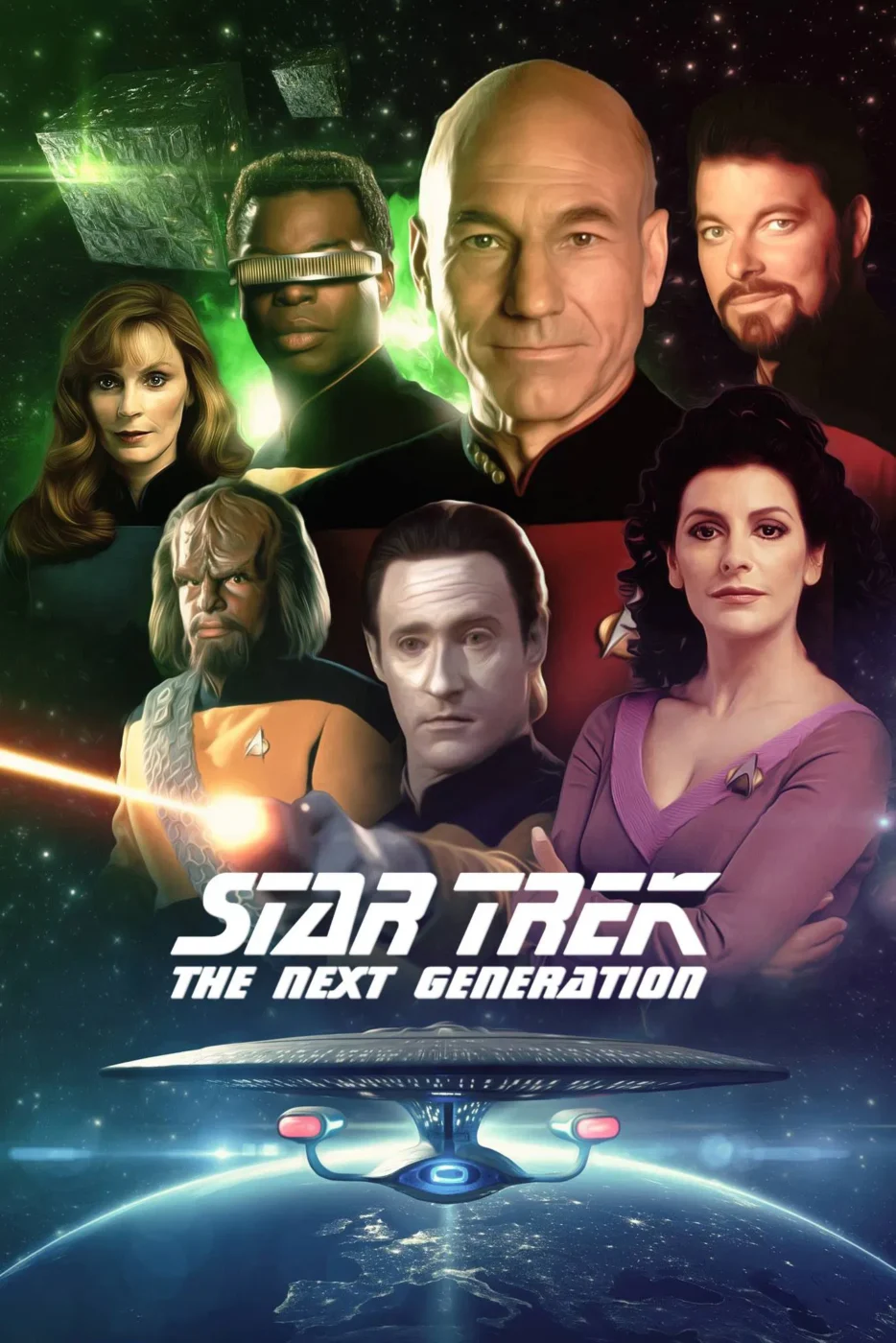
Most fans would agree that Star Trek: The Next Generation is the best of the classic shows. TNG really defined what Star Trek was for a whole generation (myself included). In a lot of ways, The Next Generation was just an ’80s version of TOS with better production values and more cerebral storylines. It was still very episodic (with a few notable exceptions). The great thing about this series was that it leans into the humanist ideal of humanity overcoming our petty squabbles, and differences, and working towards a utopian society in harmony with the rest of the galaxy. Most episodes feature diplomatic solutions rather than always resorting to photon torpedoes. The show also takes place in the 24th century rather than the 23rd century of Kirk’s era.
TNG follows the crew of the USS Enterprise-D: Captain Jean Luc Picard (Sir Patrick Stewart), Data (Brent Spiner) – an android, Worf (Michael Dorn) – a Klingon security officer, Dr. Beverly Crusher (Gates McFadden), Geordi La Forge (LeVar Burton, of ‘Reading Rainbow’ fame), William Riker (Jonathan Frakes) aka ‘Number One’, Deanna Troi (Marina Sirtis), Tasha Yar (Denise Crosby), Guinan (Whoopi Goldberg), and of course Wil Wheaton as the young cadet, Wesley Crusher. The first episode, “Encounter at Farpoint” also featured a reoccurring 5th-dimensional character with near-omniscient powers referred to as ‘Q’, played to perfection by John de Lancie, who puts the crew on trial to see if the human race is worth saving.
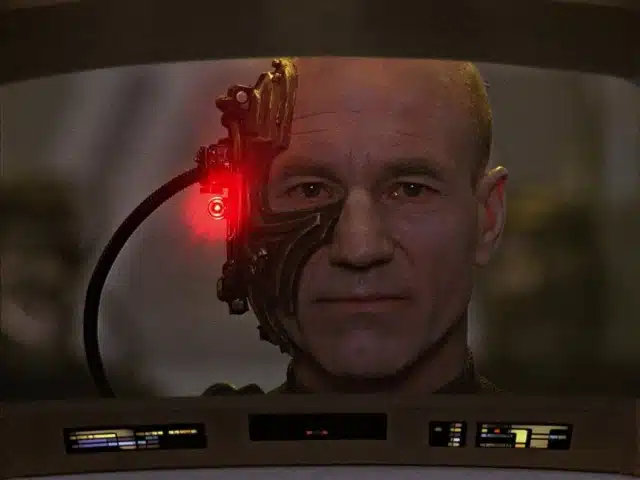
While the Romulans and Cardassians (not to be confused with the Kardashians) were the primary antagonists for most of this one, TNG also gave us one of the best and most popular Star Trek adversaries with the Borg! The Borg are a constantly evolving cybernetic hive-mind collective of zombie-like drones that conquer and assimilate entire planets and species into their ranks against their will! We even got one of the best cliffhangers of all time in the epic two-parter “The Best of Both Worlds” – where Captain Picard was actually abducted and assimilated by the Borg!
Interestingly enough, the show got off to a rather rocky start with its first couple of seasons, which include arguably some of the worst episodes in the entire franchise. Around season 3 it found its footing, and really cemented the legacy of the series as a fan favorite. TNG still has some of the absolute best episodes of Star Trek, including: “Darmok”, “Tapestry”, “Parallels”, “Chain of Command”, “Measure of a Man”, “The Inner Light”, “I, Borg”, and (my personal favorite) “Yesterday’s Enterprise”… just to name a few (I can keep going if you want). The show also introduced the holo-deck, which led to a number of wacky hijinks. We even get some fun throwbacks to TOS, with appearances from Bones, Scotty, and even Spock!
TNG ran for 7 seasons and ended with easily the best Trek series finale of all time with “All Good Things”, which dealt with Picard’s past, present, and future (?) in a very heartfelt way, and even managed to tie-in with the show’s very first episode! Absolutely brilliant.
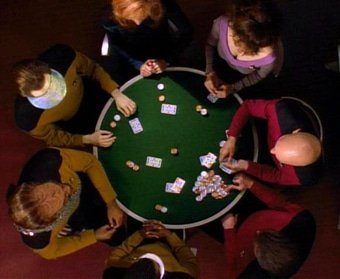
Star Trek: Deep Space Nine (1993-1999)

Star Trek: Deep Space Nine was a spin-off of TNG that focused in on a multi-cultural space station in disputed territory on the edge of Federation space. While the series had a slow start, it eventually ramped up with the ongoing Dominion War storyline which involved dozens of factions and had massive ramifications for the entire galaxy! When it first came out, DS9 was often considered the black sheep of the Trek shows, but it has since gained cult status, because of how ahead of the curve it was in terms of representation (notably with the LGBTQ community), political nuance, themes of religious extremism, and serialized storytelling rather than an episodic approach, which has since become the norm for mainstream television.
DS9 featured: Captain Benjamin Sisko (Avery Brooks), Major Kira Nerys (Nana Visitor) of the Bajoran Militia, Lt. Commander Jadzia Dax (Terry Farrell), a Trill-symbiote later known as Ezri Dax (Nicole de Boer), Odo (René Auberjonois) – a shape-shifting security officer, Dr. Julian Bashir (Alexander Siddig), Miles O’Brien (Colm Meaney) – a low-ranking TNG alumn that gets to shine here, Quark – the Ferengi bar-tender (Armin Shimerman), and Ben’s son, the young aspiring author, Jake Sisko (Cirroc Lofton). Season 4 also brought in Worf (Michael Dorn) from TNG, whose character really gets A LOT more development in this series!
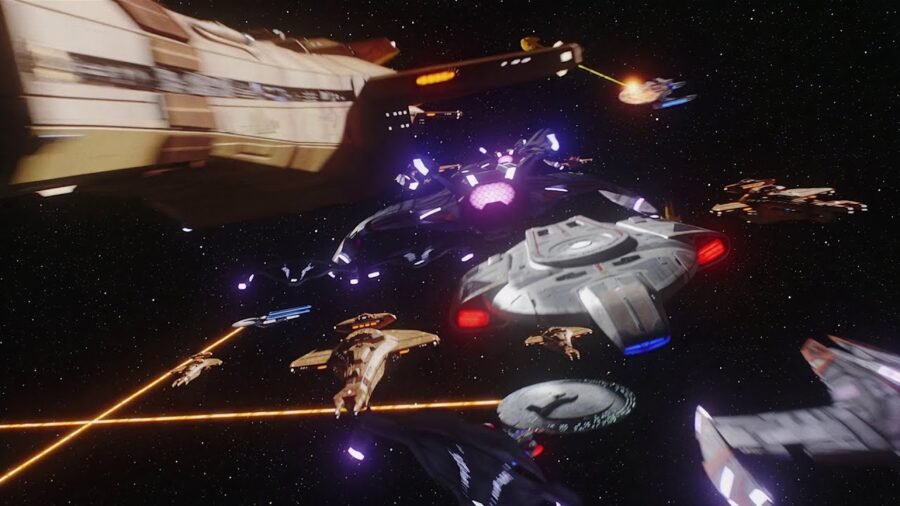
We get to follow Sisko on his journey to becoming a war-time Captain while trying to raise a son as a single parent (after tragically losing his wife to a battle with the Borg-assimilated Picard). The show really expands on a lot of alien cultures that we only got hints at in other Trek shows, especially the Cardassians, the Bajorans, the Ferengi, and the Trill, but we even get more development for the Klingons as well! DS9 is at its best when it deals with moral gray areas, which is something the early shows tended to stray away from. The show also offers some of the best large-scale space battles on TV (at least until Star Trek: Discovery gave us “The Battle of the Binary Stars”). The titular Deep Space Nine is a former Cardassian space station under joint Bajoran and Federation control and ends up being the center of the galactic conflict with the Dominion because of it’s strategic location to a wormhole that leads to the Dominion-controlled Gamma Quadrant.
While most of the show is made up of long-form story arcs, there are still a few specific episodes that are worth calling out, including some of my all-time favorite episodes of Star Trek: “Emissary”, “The Visitor”, “The Way of the Warrior”, “In the Pale Moonlight”, “Far Beyond the Stars”, “What You Leave Behind”, and of course the totally bonkers time-travel romp, “Trials and Tribble-ations”! (the TOS crossover nobody asked for but everyone loves!) While the series as a whole is more of a slow burn, the final season really pays off in a very emotional way, giving (almost all of) its characters some really great story arcs, and it ends on a bittersweet note that leaves you wanting more…
Star Trek: Voyager (1995-2001)

In stark contrast to the subtle intrigue and deep philosophical underpinnings of DS9, Star Trek: Voyager was a back-to-formula Trek series that went for more of an episodic TOS-style adventure-of-the-week approach, with a look closer to TNG and a very 90’s feel. The show actually starts as a DS9 spinoff with its first episode (“The Caretaker”) showing the USS Voyager docked at Deep Space Nine before setting off on a mission to intercept a band of Maquis rebels (see: TNG and DS9 for more context), before ending up lost in space on the opposite side of the galaxy in the Delta Quadrant! It's a long story, don’t ask. The Voyager crew and the Maquis have to work together to get back home on a journey that could take decades…
Voyager starred: Captain Kathryn Janeway (Kate Mulgrew), Chakotay (Robert Beltran), Klingon Science Officer, B’Elanna Torres (Roxann Dawson), Vulcan Security Officer, Tuvok (Tim Russ), Tom Paris (Robert Duncan McNeill), a holographic medical program called “The Doctor” (Robert Picardo), the ship’s cook, Neelix (Ethan Phillips), Kes (Jennifer Lien), and forever-Ensign Harry Kim (Garret Wang). Much like TNG (and to a lesser extent, DS9), the show doesn’t really find its footing until Season 3, where things take a sharp turn for the better when the crew crosses over into Borg territory, and we’re introduced to a fan favorite character with the former Borg drone, Seven of Nine! (Jeri Ryan) – first introduced in the excellent two-parter, “Scorpion”.
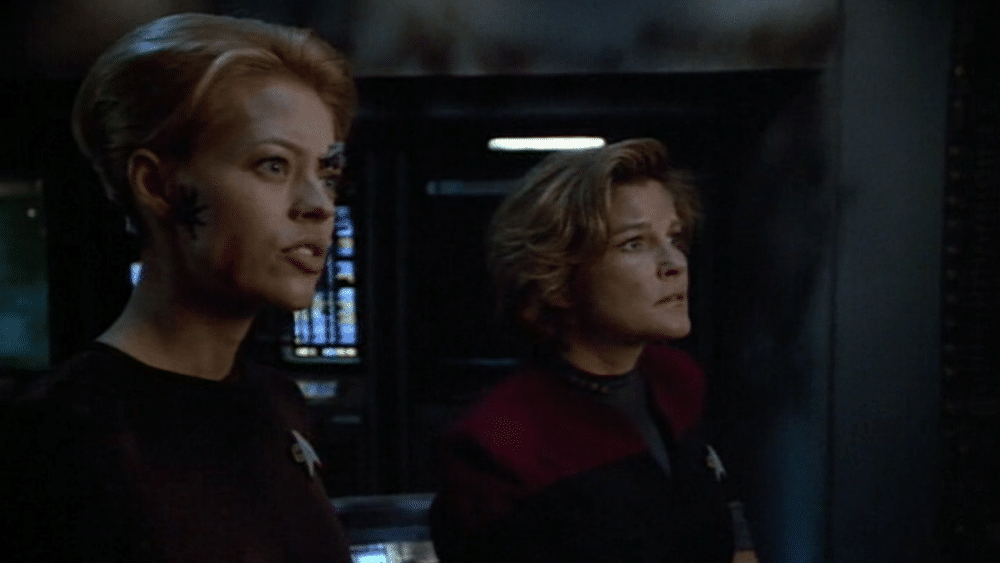
While Voyager had an extremely promising premise (and there are some great episodes, like “Timeless”, “Barge of the Dead”, and “The Omega Directive”), it often faltered by not leaning into the darker implications of the concept of being trapped on the other side of the galaxy, without reinforcements, in completely uncharted territory, instead relying on the same old well-trodden tropes of the previous shows. The show gives us some of the most infamous episodes of the franchise, with “Tuvix” and “Threshold”. Still, there was one epic two-parter in Season 4 that gave us a glimpse at what the series could have been in “Year of Hell”, which honestly should have been a whole season.
While it had some ups and downs, Voyager’s finale, “Endgame” was a bold and interesting way to end the series, and gave us one last showdown between Janeway and the Borg Queen!
Star Trek: Enterprise (2001-2005)
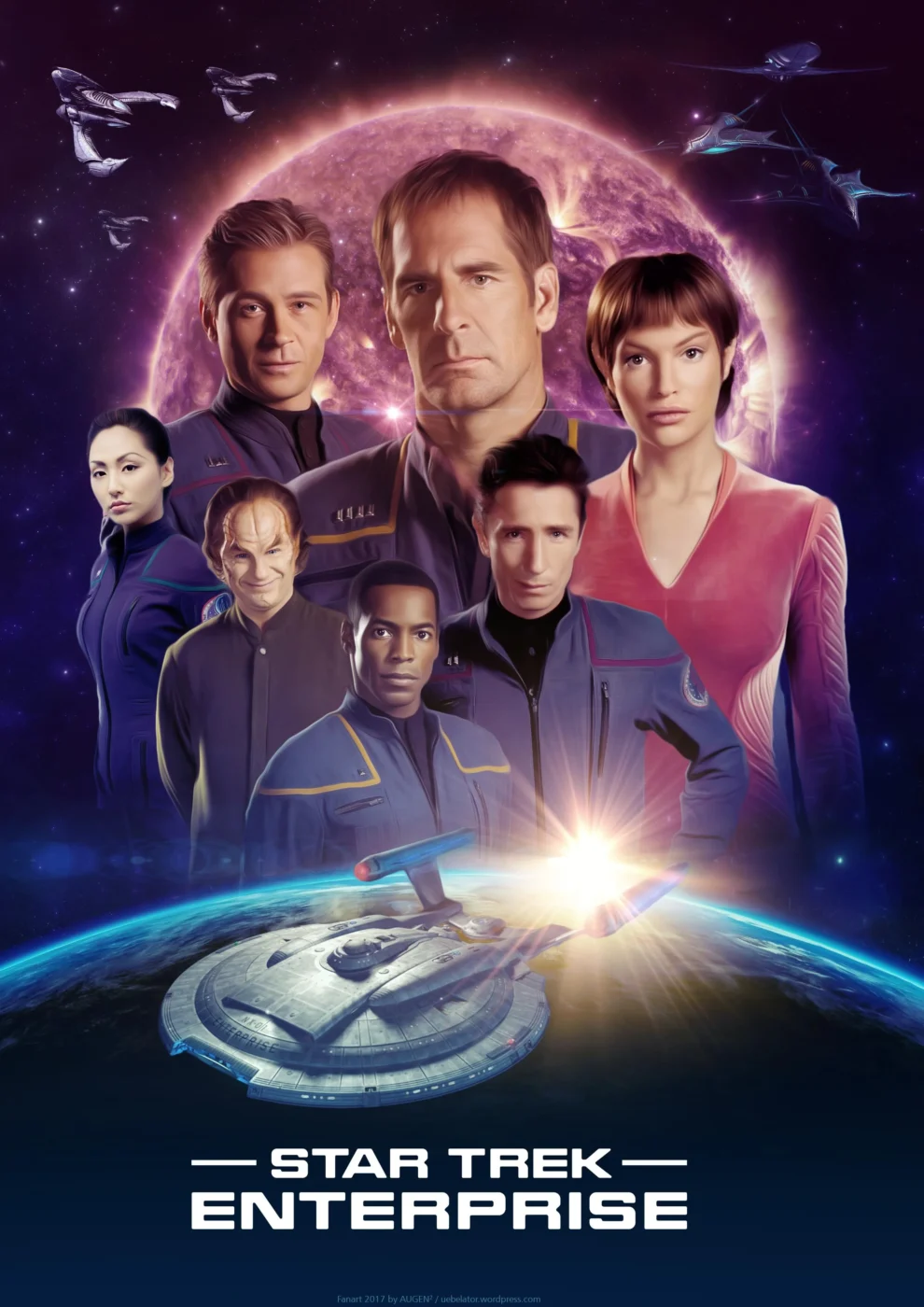
Star Trek: Enterprise (originally aired without “Star Trek” in its name) is a prequel series set in the 22nd century (the 2150’s) about the first Warp 5 Starfleet vessel, the proto-type NX-01 Enterprise, before the founding of the Federation (about 100 years before Kirk’s Enterprise). This has to be one of the best concepts with some of the worst execution in the franchise’s history. It’s not entirely terrible by any means – in fact, it has some truly great episodes – but the show definitely had very low low points, and overall didn’t quite stick the landing.
Enterprise follows: Captain Jonathan Archer (Scott Bakula of “Quantum Leap” fame), Vulcan First Officer, T’Pol (Jolene Blalock), Trip Tucker III (Connor Trinneer), Hoshi Sato (Linda Park), Dr. Phlox (John Billingsley) – a Denobulan, Malcolm Reed (Dominic Keating), and Travis Mayweather (Anthony Montgomery). There’s also Shran (Jeffrey Combs) – a reoccurring Andorian character, as well as cameos from other former cast members, most notably James Cromwell reprising his role as Dr. Cochrane and Brent Spiner as Arik Soong, the ancestor of Data’s creator!
In a lot of ways, Enterprise felt like a more “realistic” or “grounded” take on Star Trek (at the time), compared to the other shows that took place further in the future, which ended up being both a gift and a curse. The show also had some unique challenges, as a prequel being made in the early 2000s set 100 years before a series that was made in the 1960s. They took some big risks, some which paid off, others that didn’t (like that intro music), but this was an exciting time to be a fan. It felt great to have a show that was taking Trek seriously, especially after how cheesy things got with Voyager. That said, the show was often too quick to undercut its own premise by immediately introducing classic Trek staples right out the gate, like Klingons, teleporters, universal translators, and time travel, when it might’ve been more interesting if they’d held off on some of those things till later.

Its first couple of seasons were a bit lackluster at times, and Season 3 was a train wreck in slow motion (imho), but Season 4 might actually be one of the strongest seasons of Star Trek up to this point – which is rather unfortunate considering it got canceled right as things were getting good. One of the highlights of the final season was that the production leaned into some iconic trappings of TOS with episodes like “Bound”, featuring the Orion Syndicate, and an excellent two-parter set in the Mirror Universe called “In a Mirror, Darkly” that focused on the early conquests of the Terran Empire (even including an alternate intro!).
It also doesn’t help that the final episode of the series, “These Are the Voyages…” is one of the most divisive among fans, especially since it was a TNG holodeck crossover with Riker and Deanna Troi, and the fact that they killed off a beloved character. While I understand the complaints, I actually kind of appreciated what they were going for, especially considering the circumstances surrounding the show’s early cancellation, it was a clever way to tie everything up and give it the “historical context” that the show was going for, by jumping ahead and finally seeing the formation of the Federation.
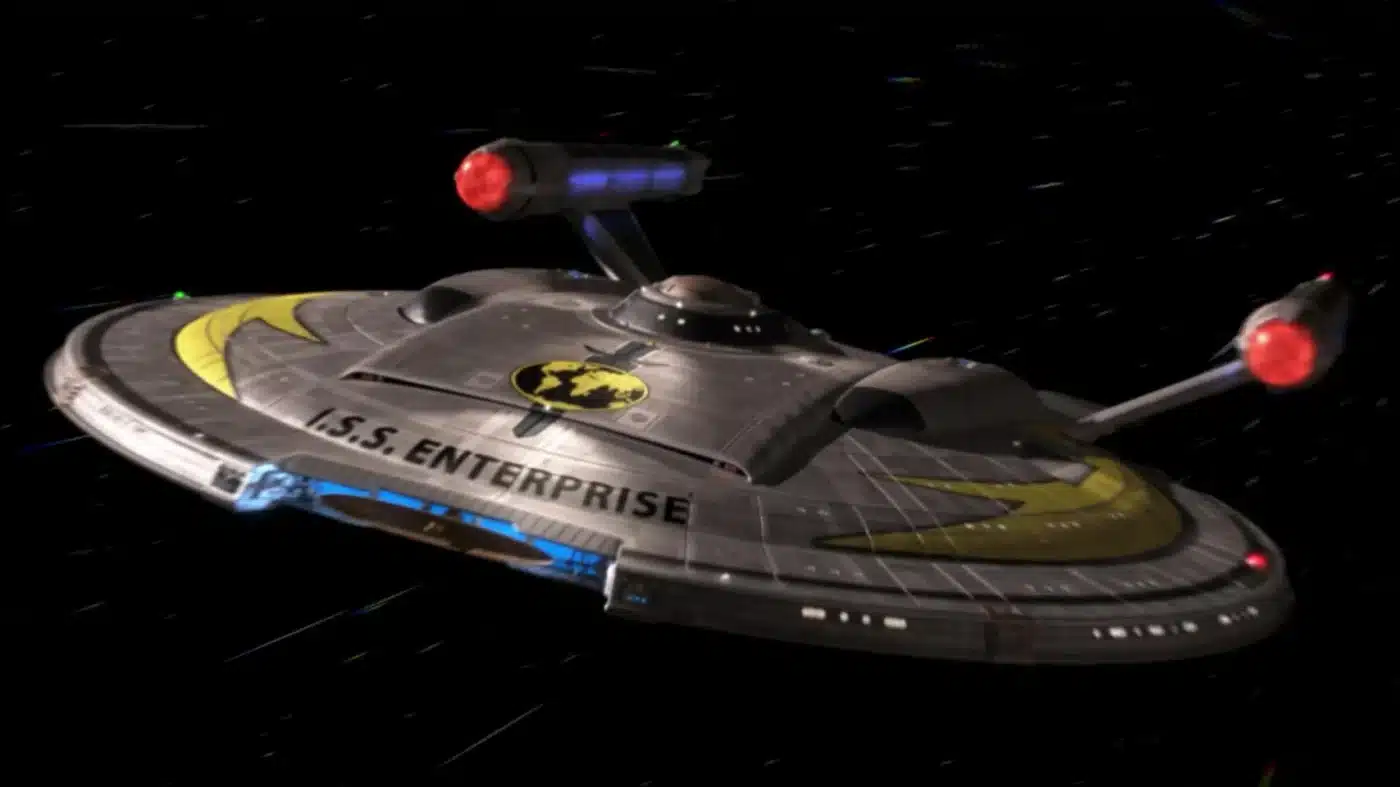
Unfortunately, because the show was canceled, we never got to see the Romulan War play out (first referenced in TOS: “Balance of Terror”), and never got satisfying closure on the Temporal Cold War storyline. And the worst part is that between the box office failure of “Star Trek: Nemesis” and the overall lukewarm response to both Voyager and Enterprise, Star Trek was dead in the water for what felt like an eternity – that is until director JJ Abrams decided to resurrect the franchise in 2009…
Boldly Go!
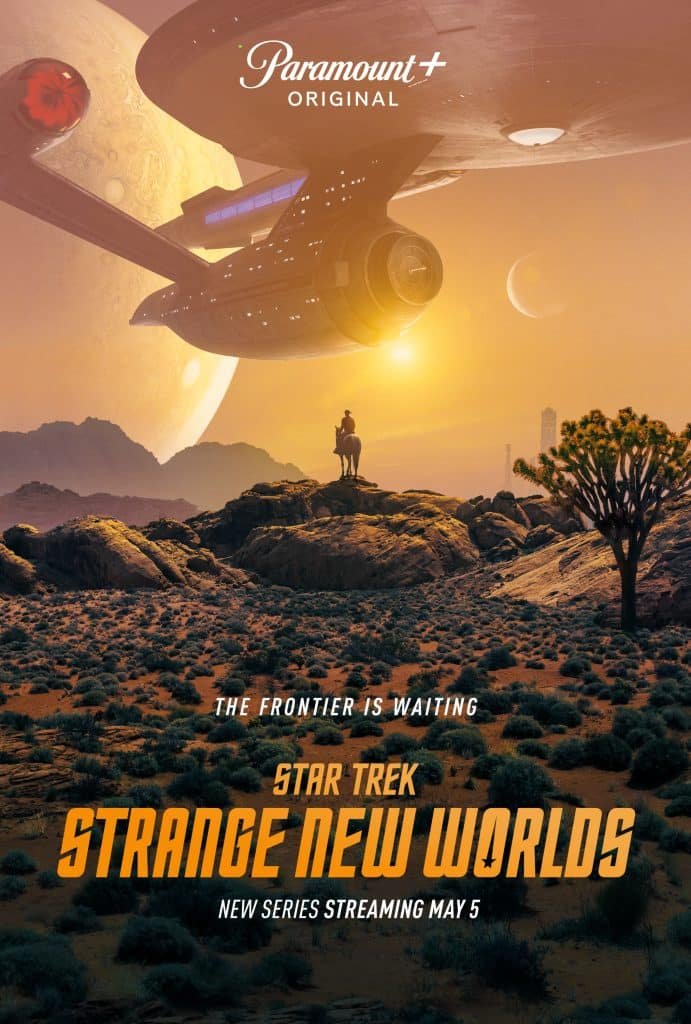
So there you have it! Click here for Part 2 – on the modern era of the franchise, and be sure to read my breakdown of ALL the Star Trek movies here, or listen to my friends and I talk about Star Trek on “Too Young For This Trek: A Star Trek Podcast”. You can also help support me by buying my latest book, “2299” – a sci-fi/noir novella (on Amazon or Audible), and catch up with ALL the latest Trek shows and more, now streaming on Paramount Plus!

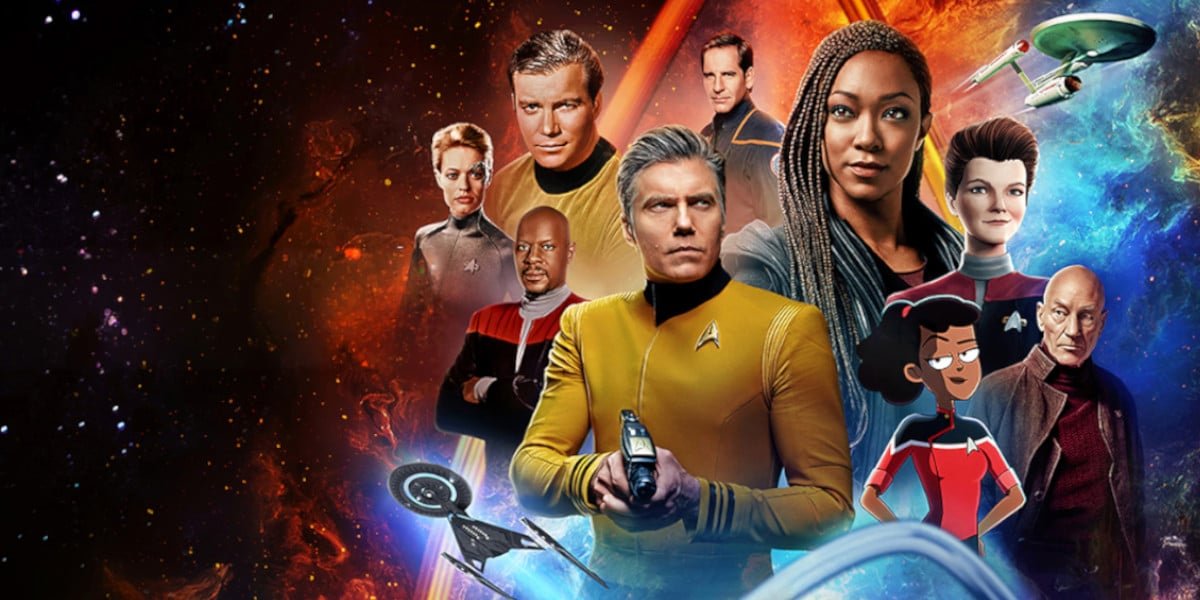
[…] for fans of: Stellaris, Star Trek, and […]
[…] Star Trek Movies are often overshadowed by the shows themselves (all 12 of them), but despite having arguably some of the franchise's most notorious outings (as well as some of […]
[…] Trek was a cultural phenomenon from the late 60s through the early 2000s with a series of (mostly good) TV shows (see Part 1!) and then limped along for a few years as a movie franchise. The big question for years was when and […]